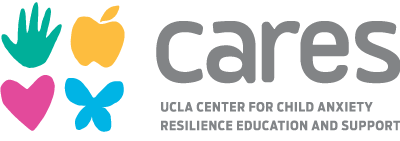Supportive relationships create a foundation of resilience for all members of a family. When working with children and families, I find it helpful to highlight that resilience is not the absence of stress or challenges, but rather a family’s capacity to adapt and thrive when stressful situations arise.
Developmental research consistently has shown that resilience throughout the lifespan is predicted by our earliest caregiving experiences. In this post, I want to share why it is so important for children’s well being that parents feel empowered to integrate resilience skills and habits into their parenting practices and family routines.
When families face stress or adversity, their ability to navigate these challenges successfully can be supported through specific skills that parents and children can develop and practice together. Five key skills that are central to enhancing family resilience include:
- Emotional regulation: Learning how to understand and identify feelings and manage difficult emotions, like anger or sadness, provides a foundation for all other resilience skills. When one person is upset or anxious, it can be tough to solve a problem or even communicate effectively. Recognizing your own feelings can help you to know when you might need to take a break, or to use a personal coping strategy. For example, when parents are feeling frustrated after a long commute home from work, it might not be the best time to revisit a disagreement with their teenager. When parents use self-care during times of stress, such as exercise or relaxation practices, they provide a positive example for their children in how to manage difficult feelings in appropriate ways.
- Goal Setting: Coming together to set shared family goals is often a first step to helping a family feel stronger when faced with a new challenge. Once a goal is established, it is important to break that goal into smaller, achievable steps. For example, when family members have hectic, demanding schedules and they haven’t spent much quality time together, they might want to set the goal to “spend more time together.” The problem with a general goal like ‘spend time together’ is that it can be tough to achieve without more specifics. Structuring the goal to be more specific, such as starting with a specific step – like ‘spend Saturday mornings together for breakfast’ gives everyone something they can do to achieve the goal.
- Communication: Families that communicate in an open and clear way feel more supported and closer than those who have difficulty communicating how they feel or what they need. Remember to check in with your partner or child regularly, let them know you are available to talk anytime and be open about your own feelings as well. This openness can provide a good model for your children that you are interested in their experiences and feelings. It is important to remember that a key part of communication is listening; being a good listener can go a long way when it comes to helping family members feeling supported.
- Managing stress: High levels of stress can undermine even the strongest family’s foundation. Family members who are able to recognize when they are feeling increased stress and take the necessary steps to feel better (often referred to as self-care) are able to be more present and supportive of other family members. Parents are also able better able to support their children when they take time for themselves. Remember, when you’re running on empty, you may have little left to give to anyone else.
- Problem Solving: All families encounter new challenges both positive and difficult, but the key to resilience is a family’s ability join together to address these changes as a team and work together to solve problems when they arise. In our work with families, we often teach a problem solving strategy called SNAP that allows the entire family to work together in a fun and collaborative way. This type of family-level problem solving keeps children of all ages engaged and rallies every family member around making a positive change. You can learn more about SNAP here!
You will find that all of these skills are related to each other—as your family develops new strengths in one area, there is often a cascading impact on other areas. You may find that by setting a goal to spend time together as a family creates new opportunities for positive communication within the family which may lead to new ways to collaborate and feel connected.
Written by
Dr. Patricia Lester
CARES Co-Director

